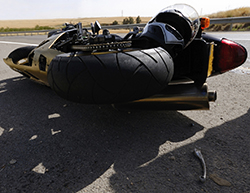 Right To Ride has responded to a Road Safety public consultation on an European Union (EU) strategy to reduce injuries resulting from road traffic accidents.
Right To Ride has responded to a Road Safety public consultation on an European Union (EU) strategy to reduce injuries resulting from road traffic accidents.
The consultation, a survey from the European Commission’s (EC) Energy and Transport states that “Road safety strategies traditionally focus on reducing fatalities. Injuries, however, are overlooked and have become a major health problem. In 2010, about 1 500 000 people were injured on the roads of the European Union, at huge economic and human cost to society.” adding that, “Reducing the number and the severity of road traffic injuries is one of the strategic objectives outlined in the Policy Orientation on Road Safety 2011-2020 and a priority for EU action.”
Therefore the EC say that it is, “Developing a comprehensive strategy of action concerning road traffic injuries and emergency services, with the help of all relevant actors.”
The EC says that initially, “It will seek to find a common understanding of definitions and concepts relating to casualties (in particular, the definition of serious and slight injuries), improve data collection and identify courses of action to improve prevention and intervention, including their socio-economic impact.” and that based on feedback from the first stage of the proposed strategy, “Specific or tailor-made actions might be identified with a view to increasing the accuracy of existing databases on road injuries”.
This initial stage appears to be whether the count of road injuries is accurate.
Consultation ended on 22/06/2012
Consultation
Below is a brief outline of our answers and comments to the questionnaire:
Question: in your opinion should road safety be a top priority at all political levels (EU, national, local authorities)?
Answer: No
Comments: Given the dire economic circumstances that Europe finds itself in, improving working conditions, getting rid of corruption, would enable EU citizens to lead a healthier, better life and be less stressed and therefore less likely to have road traffic collisions.
Question: Do you see EU added value in setting up a strategy to reduce injuries from road accidents?
Answer: No
Comments: Money would be far better spent on improving working conditions for EU citizens – see previous comment.
Question: Do you think the social cost of injuries should be internalised as much as possible, notably by increasing significantly the insurance premium after an accident, to make road users aware of the consequences of their behaviour?
Answer: No
Reason: The insurance industry is an industry focused on profit and the collusion between the private (profit making) sector and government officials is another example of how lobbying by industries such as the insurance industry can lead to corruption. The best and surest method of internalising social costs of injuries is to ensure that there is a focussed effort to increase initial training and post training for all road users and to focus on young students as part of a global target to educate young people about road use.
Question: Nowadays in several Member States accident data are collected by the police or other enforcement bodies in on-site intervention. However, this can lead to misreporting (a serious injury cannot always be correctly detected) and underreporting (police do not record all accidents). In your opinion who would be the competent authority to collect the data?
Answer: Other
Reply: The data should be recorded by both authorities – i.e. police – because they are on the scene when the collision occurs and hospitals who see the injured road users as well as obliging insurance companies to provide the authorities with information to record vehicle damage
Question: A common definition of ‘serious/slight injury’ does not exist at European level. Therefore, current statics do not reflect uniformly the situation, because the aggregated data are not collected on a homogeneous way. In your opinion, is there a need for a common EU statistic definition?
Answer: Yes
Reasons: However, it is a fact that data gathering at a pan European and global level will always have problems due to the historical and cultural methods of gathering information. The best solution is to find commonalities and record them as such. For example in the Criminal Justice System, the Handbook of Crime and Criminal Justice Statistics indicates how methodologies differ in different European countries and how best to present data based on these differences.
Question: Do you agree that information on injuries and trauma caused by accidents should be used by a number of stakeholders (such as insurers, vehicle manufacturers, etc.) to lower the consequences of a road accident? -single choice reply-(optional)?
Answer: No
Reasons: Providing the insurance industry with such information could lead to the exclusion of citizens based on risk factors which may not be accurate and purely for the benefit of making a profit. Information relating to injuries and trauma should be offered to vehicle manufacturers.
However as in the past, this information should not be used to compromise road safety e.g. when the Commission indicated that the Automotive industry should introduce soft bonnets to reduce pedestrian injuries, a less effective compromise of automatic headlights on was agreed on. There is no tangible evidence that mandatory Dedicated lights reduces injuries. Soft bonnets would have had that effect – based on research evidence.
Question: If there is any additional issue you wish to raise in this context, please provide us with a general case assessment.
Answer: While the objectives of the strategy to reduce road casualties are honourable, it seems that the focus on the citizen is vague and ineffective. The most effective method of reducing road casualties is education, respect and focus on training of young people at schools and when learning to drive a car or ride a PTW. There is far too much focus on secondary measures such as technology and enforcement.
The questionnaire asks participants to list references to any studies or documents of relevance to this consultation on injuries resulting from road accidents. If you are aware of any study or document or the organisation, group or association you may be a member of has produced any studies or documents you can forward these to the EC.
At Right To Ride we have forwarded the EC our Northern Ireland Motorcycle Fatality Report 2012, the report is an Indepth Study of 39 Motorcycle Collisions In Northern Ireland between 2004 and 2010 where 41 Motorcyclists were Fatally Injured.
Towards a European Road Safety Area
Meanwhile in the EC document – Towards a European road safety area – Policy orientations on road safety 2011-2020 which is being promoted as EU road safety guidelines 2011-2020, it specifically mentions motorcyclists as vulnerable road users.
Specifically making vulnerable road users – especially motorcyclists – safer by improving communication between authorities and road users, and introducing periodic inspections of motorbikes, mopeds, etc.
The document says that, “The problem of motorcyclists’ safety ” should be addressed through a range of actions, with a view to:
1. Improving awareness of PTW (Powered Two Wheelers – motorcycles – scooters – mopeds) riders by other road users.
2. Encouraging research and technical developments aimed at increasing PTW’s safety and reducing the consequences of accidents, such as standards for personal protective equipment, airbags, the use of relevant ITS applications (e.g. eCall) and progressive installation of advanced braking systems, appropriate anti-tampering measures, etc.
The Commission will propose to extend to PTWs the existing EU legislation concerning roadworthiness testing. Finally, on-going efforts to better adapt road infrastructure to PTWs (e.g. safer guardrails) should also be continued.
3. Encouraging Member States to focus enforcement on speed, drink and driving, helmet use, tampering and riding without a proper PTW licence.
You may be familiar with some of these issues that the EC is already progressing with such as mandatory advanced braking systems and appropriate anti-tampering measures in the proposed EU Regulation that is presently under discussion you may not be aware of these other range of actions.
The problem with these actions is that, although we can simply welcome the on-going efforts to better adapt road infrastructure to PTWs (e.g. safer guardrails,) the issue is what is in the detail for improving awareness of PTW riders by other road users.
While encouraging research and technical developments aimed at increasing PTW’s safety and reducing the consequences of accidents, is welcome what are the details of standards for personal protective equipment, airbags, the use of relevant ITS applications (e.g. eCall) and rather than a concentration on the consequences of accidents a step back to concentrate on looking at the prevention of accidents would be more appropriate.
Of course nobody would deny that enforcement on drink and driving is to be encouraged however perhaps enforcement on speed should be on inappropriate speed, helmet use is more a “Southern” European issue and tampering and riding without a proper PTW licence suggests that there is only an issue with PTW Licences.
Bundle these actions together as “The problem of motorcyclists’ safety” the problem then becomes the motorcyclists acceptance and the problem of throwing out the bath water, baby and all, with any EU proposals on regulation or policy on improving motorcyclists safety.
It’s all a balancing act as all this will not go away, so from Road Safety Consultations to EU Regulations to Road Safety reports, a certain flair to understanding the depth of these issues and how they are interlinked and can be dealt with, without ending up looking at an empty bath and sitting on a heavily regulated motorcycle.
Information
EU STRATEGY TO REDUCE INJURIES RESULTING FROM ROAD TRAFFIC ACCIDENTS – Consultation period: 17/04/2012 – 22/06/2012 – Click Here
Northern Ireland Motorcycle Fatality Report 2012 – pdf 1.1mb – Click Here
Towards a European road safety are – A policy orientations on road safety 2011-2020 – pdf 736kb – Click Here
.


Intelligent Transport systems pose a risk to motorcyclists due to the positioning of the Data that may make it necessary for the rider to take their eyes off the road..
That is if they can see the cluster pack due to white out from the Sun.